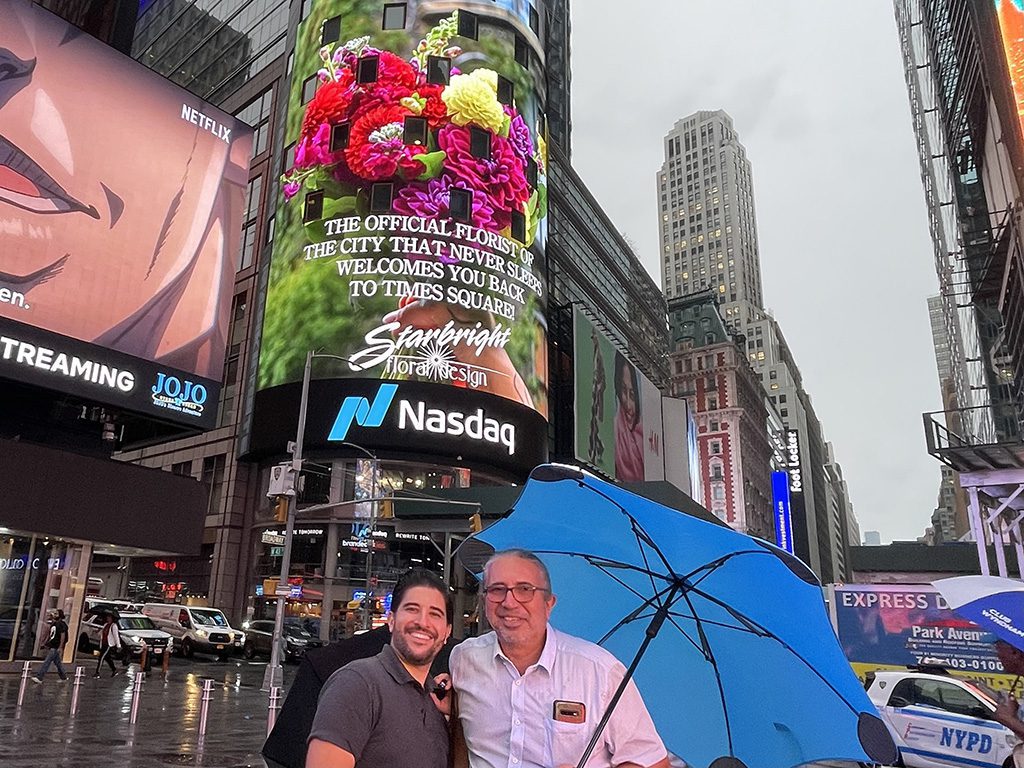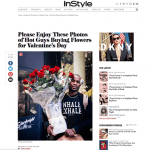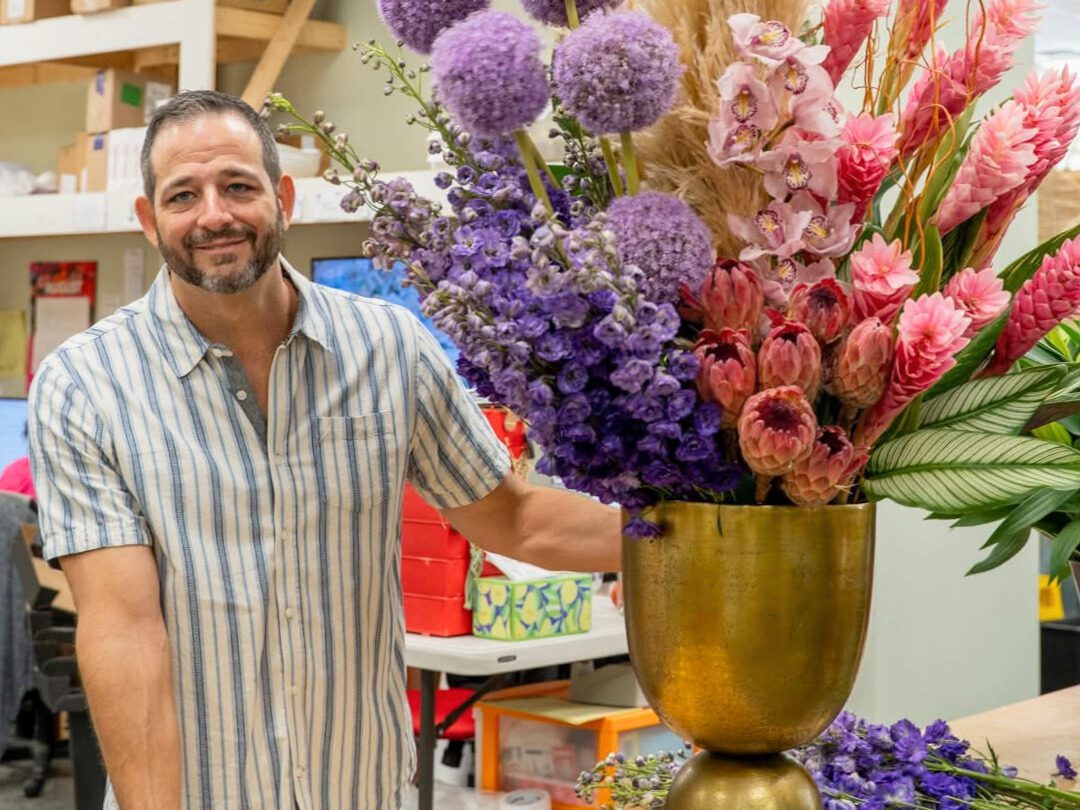
Nic Faitos, pictured with his son, Stephen, favors marketing strategies that customers will remember, such as his recent takeover of Times Square, where he rented space on the Nasdaq billboard.
Nic Faitos likes a big reaction. In both his personality and his marketing strategy, he strives to be unexpected, original and capture attention.
It’s why he’s given away free roses at Broadway shows, peppering the theater seats with an unexpected gift for spectators. It’s also why he sponsors the flower wall at a charity benefit. And it’s why, when he started Starbright Floral Design in New York City 29 years ago he showed up — unannounced — at the city’s biggest hotels with flowers, seeking their business for lobby displays and events.
Starbright’s most recent marketing campaign stays true to the strategy: an advertisement on the Nasdaq billboard in Times Square welcoming the return of tourism to New York City the day after Labor Day. Amid gorgeous photos of colorful flowers, the message, “The official florist of the city that never sleeps welcomes you back to Times Square” flashed among the throngs of people, and more importantly among the many offices of Starbright’s biggest clients. One event planning business has offices directly facing the billboard. “I called them and said, ‘Look out the window,’” Faitos says with a chuckle.
Faitos talks about his marketing strategies and what other retail florists can learn from them.
Q: What’s your marketing strategy?
A: I have a guerilla marketing mentality. Pop up where no one expects you to be and blow it up in proportion.
Q: It doesn’t get much bigger than Times Square. Where did that idea come from?
A: I’m probably the only florist who subscribes to Ad Age. I’m a marketing geek. It’s not a publication a florist typically subscribes to, but I learn so much. I recently read that there is remnant advertising that you can buy on the cheap. This is unsold time on radio, TV or in magazines. If it has not been sold, it will go very cheap. Just like an empty airplane seat, they want it filled.
Q: What did it cost?
A: I was able to put the deal together for a very small, undisclosed, amount of money. But it isn’t about the deal, it’s that I did something that had a perceived value. It’s about the reactions.
Q: Obviously not everyone is going to buy ad space in Times Square. How does your strategy translate to florists in smaller communities, or other regions?
A: Build a brand. There are several types of advertising you can do, I’m a fan of brand advertising. I’m not trying to buy clicks or individual sales; I want the name recognition.
Q: Is that where your brand as “The Florist of Hospitality” comes in?
A: Exactly. And it’s also why we call ourselves “The Official Florist of the City That Never Sleeps.” The city that never sleeps is not trademarked. New York City does not have an official florist. But I knew I needed to become the official florist, so Starbright did.
Q: But you’re doing more. Your social media accounts are part of it, right?
A: Of course! We’re using the megaphone to tie our name to our audience, showing us doing big things. The critical thing is for your audience to become proud to know you. For them to say, “Wow, I can’t believe they are doing that.” The emotional connection between Starbright and our audience just becomes stronger. And they start sneezing.
Q: Sneezing?
A: Someone once told me what you really want is your audience to become sneezers and spread your brand. It’s the amplification of the event happening through other channels.
Q: You mentioned reading Ad Age, are there other things you read that are unrelated to the floral industry?
A: I always have a business-related book on Audible that relates to something that is not floral.
Q: What are you listing to now?
A: “Atomic Habits” by James Clear. It’s a phenomenal book. The author talks about how if you make minor changes along the way, you’re going to end up someplace good.
Q: How can florists make a small, but impactful, change to their marketing strategies?
A: The objective is to put yourself out there and to appear bigger than you are. You want to create a cloud, an aura, where customers say, “Wow, these guys are everywhere, they must be good.” Starbright isn’t an enormous business, but we show ourselves to be much bigger than we are. That builds credibility in a good way.
Sarah Sampson is a contributing writer for the Society of American Florists.






